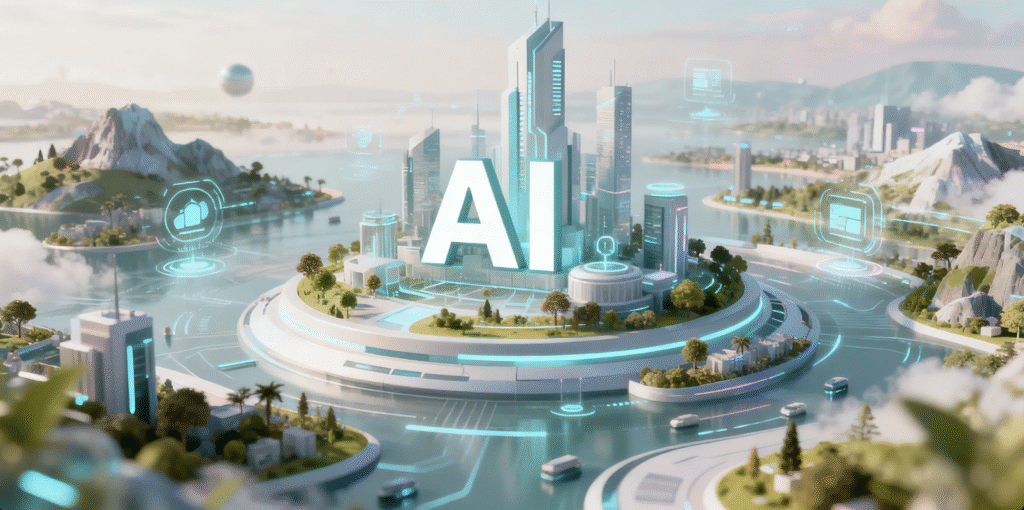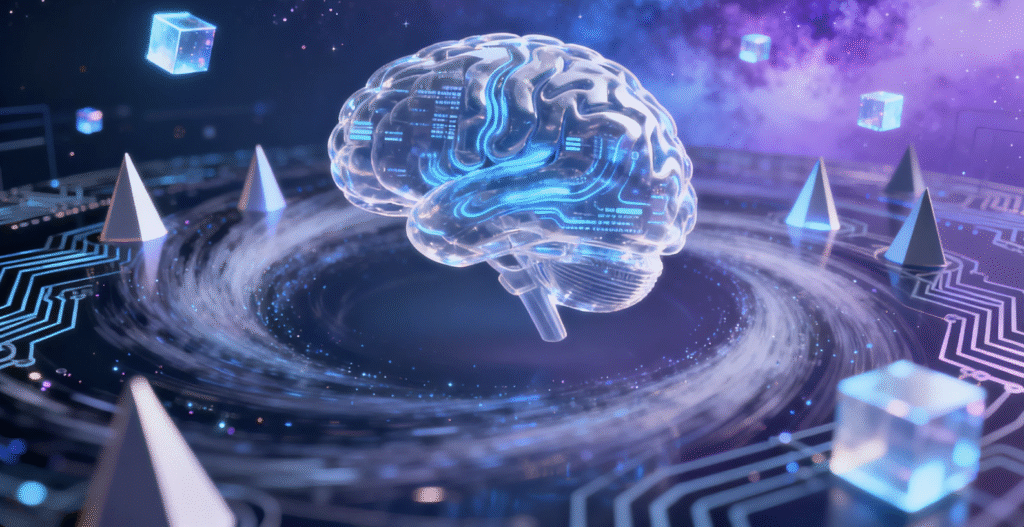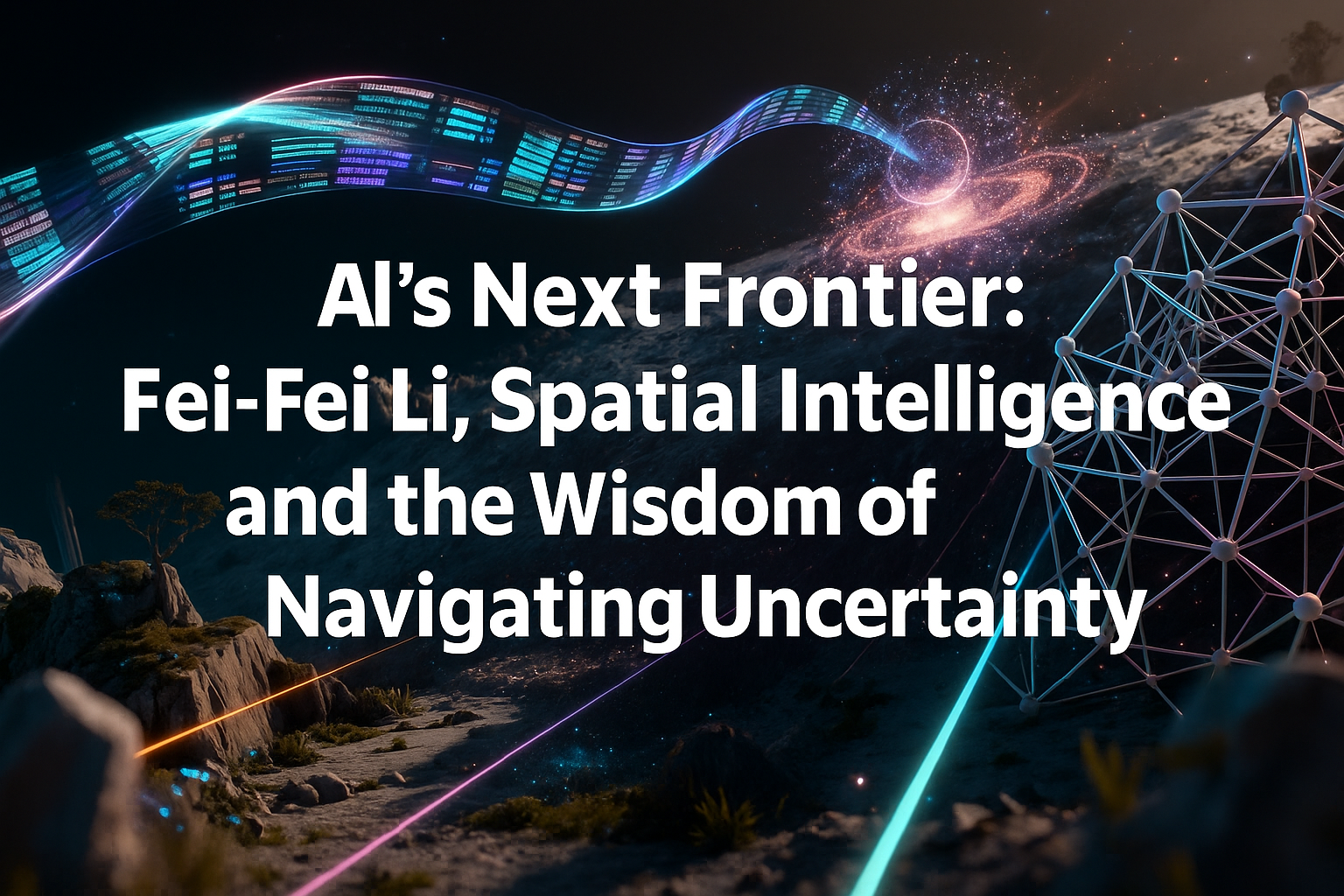AI’s Next Frontier: Fei-Fei Li, Spatial Intelligence, and the Wisdom of Navigating Uncertainty
For years, AI has lived on flat ground — processing text, classifying images, and predicting numbers. But the world isn’t flat. The real test of intelligence is moving through a messy, unpredictable, 3D physical world.

This is the next frontier: spatial intelligence. And it’s not just a technical race — it’s a test of vision, strategy, and execution.
1. The Two Strategic Paths to the 3D Future
When it comes to building AI for 3D environments, two strategies are emerging:
1. Marble — Persistent, High-Fidelity Worlds
Fei-Fei Li’s World Labs is behind Marble, a system that generates vivid, stable 3D spaces from text or images. Think gaming, metaverse design, or architecture — anywhere quality and persistence matter more than real-time change.

2. Genie — Real-Time, Physics-Driven Worlds
DeepMind’s Genie focuses on dynamic interaction and physical simulation. It generates environments that follow physics rules — ideal for robotics training, disaster response drills, and scientific simulation.
These aren’t rivals. They’re two sides of the same coin: one optimizes for creativity and permanence, the other for interaction and adaptability. Both point to the same core challenge: teaching AI not just to generate 3D content, but to understand 3D space.
2. World Labs’ “Large World Model” — Cracking the Code of Spatial Intelligence
Dr. Fei-Fei Li and the World Labs team are betting on the latter with their Large World Model (LWM). Their thesis is simple, yet profound: If AI is to become truly intelligent, it must master space before language.
Biologically, animals mastered spatial awareness (recognizing paths, finding food) hundreds of millions of years before humans developed complex language. Spatial intelligence is the “source code” for general intelligence.

World Labs’ bold move is an attempt to give AI three key abilities:
- From 2D to 3D: Reconstruct objects and spaces from flat images using geometry and reasoning.
- Generation + Reconstruction: Not just dream up virtual spaces but also digitize real ones with physical rules intact.
- Scarce Data, Rich Reasoning: Shift from brute-force data collection to efficient spatial reasoning, overcoming the lack of labelled 3D training data.
3. The Fei-Fei Li Playbook: From ImageNet to World Labs
For every Founder and Investor, the trajectory from ImageNet (2009) to World Labs (2024) reveals Fei-Fei Li’s methodology:
- Start from first principles: In 2009, ImageNet was dismissed as impossible. Her insight? If recognition requires data, build the dataset first.
- “Do it, then prove it.”: She didn’t wait for consensus. Fei-Fei Li created the dataset first (ImageNet) by mobilizing 48,000 people to label 15 million images, betting that value creation beats theory.
- Stay on the core logic: Just as ImageNet unlocked vision, World Labs is betting spatial intelligence will unlock robotics, AR, and embodied AI.
The entrepreneurial takeaway: when the logic holds and value is real, act before it’s obvious.
4. Ancient Wisdom for Modern Tech Cycles
The strategic risk of this shift is immense. The philosophy to navigate it comes from the ancient text, the I Ching (Book of Changes), specifically the Kan Gua (坎卦), representing Peril/The Abyss:

- “Xi Kan” (习坎) Challenges are normal: Treat challenge as the normal state of exploration. Innovation isn’t a smooth road; it’s a series of checkpoints.
- “You Fu” (有孚) Hold your conviction: Maintain inner conviction and sincerity. In a capital market driven by hype, sincerity to the core problem is the source of resilience.
- “Xing You Shang” (行有尚) Keep moving – like water, flow around barriers instead of forcing through them. World Labs embodies this: when 3D data proved scarce, they didn’t quit. They pivoted to reasoning-driven models—same goal, different path.
5. Why This Matters
For investors and executives, the message is clear:
- Spatial intelligence is the missing link between today’s “flat” AI and tomorrow’s embodied, useful agents.
- This is infrastructure, not hype — the foundation for robotics, industrial automation, metaverse, disaster response, and beyond.
- The winners will combine deep tech with resilience — the courage to commit before the market consensus, and the adaptability to change tactics without losing direction.

AGI won’t arrive with another chatbot. It will arrive the moment AI can move through the world as confidently as it can talk about it.
And that journey, like all great ventures, requires both cutting-edge science and the ancient wisdom of how to cross numerous challenges.





